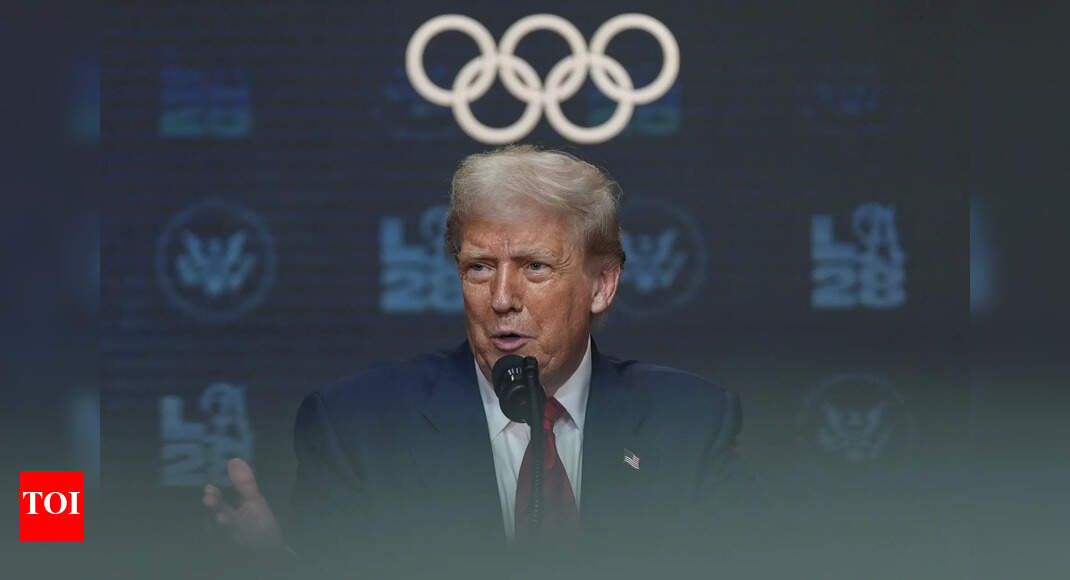
What began as an administrative response to campus antisemitism has swiftly evolved into something far more consequential, a quiet reengineering of American higher education’s relationship with the world. In recent months, the Trump administration has used financial pressure and legal settlements to compel universities to reduce their enrollment of international students. At the heart of this effort lies a controversial agreement with Columbia University, pushed through after the White House withheld more than $400 million in research funds. The settlement includes a little-publicized clause mandating that Columbia “decrease financial dependence on international student enrollment,” a provision that could soon become a national template.Beneath the surface of these actions is a larger strategy. Led by White House Deputy Chief of Staff Stephen Miller, the administration appears intent on narrowing the global footprint of American academia. And the tools being used, coercive settlements, immigration restrictions, and regulatory overhauls, signal a deliberate turn inward, where ideology overrides economic logic, and national exclusivity eclipses educational openness.
Columbia’s agreement: The Trojan Horse
On July 23, 2025, Columbia University entered into a sweeping agreement with the federal government that included more than just penalties and oversight mechanisms. While the public narrative focused on the institution’s handling of antisemitic incidents, the document’s ninth page revealed a different agenda: Columbia must now “examine its business model” to reduce reliance on international student tuition.This clause is not only extraordinary, it is counterintuitive. International students typically pay significantly higher tuition fees, helping offset the costs of financial aid and public funding shortfalls. For Columbia, where nearly 40% of the student body comes from abroad, this condition strikes at the heart of the university’s fiscal architecture. Yet the administration’s readiness to risk long-term financial and academic harm suggests its goals extend far beyond the campus quad.
Stephen Miller ’s ideological playbook
The intellectual force behind this initiative is Stephen Miller, a senior Trump aide whose tenure has been marked by an aggressive dismantling of immigration pathways. Now, his focus has shifted to universities. According to reports, Miller and strategist May Mailman have spearheaded private negotiations with college administrators across the country, leveraging ongoing investigations as a means to extract policy concessions, chief among them, limiting international student admissions.The case of Brown University highlights this dynamic. Though also under investigation, Brown, where only 14% of students are international according to US media reports, was not compelled to adopt the same enrollment clause as Columbia. This discrepancy points to a strategic target: Institutions perceived as too globally oriented, too dependent on foreign talent, or too resistant to the administration’s nationalist vision.
The economic cost of isolation
The economic ramifications of this policy shift are staggering. International students contributed nearly $44 billion to the US economy and supported more than 378,000 jobs in the 2023–24 academic year, according to NAFSA: Association of International Educators. A projected 30% to 40% drop in new international enrollment could trigger a significant contraction in university funding and local economies alike.Moreover, international students are overrepresented in critical fields. In 2025, they made up 71% of full-time graduate students in computer science and 73% in electrical and computer engineering according to media reports. Restricting their entry not only weakens academic departments—it undermines the country’s technological competitiveness.
Targeting work pathways and immigration status
The administration’s approach is not limited to enrollment caps. It is also dismantling the infrastructure that allows international students to stay and work after graduation. Joseph Edlow, director of US Citizenship and Immigration Services, has signaled plans to eliminate the Optional Practical Training (OPT) and STEM OPT extensions. Meanwhile, proposed changes to the H-1B visa process would disadvantage recent graduates through salary-based selection, effectively locking out international students at the beginning of their careers.There is also talk of abolishing the “duration of status” policy, which currently allows students to remain in the US for the full length of their academic program. Under the proposed rule, extensions would require formal approval, introducing bureaucratic hurdles that could interrupt studies and increase the risk of deportation.
A shrinking future without global talent
The demographic case for expanding, not restricting, international enrollment is well-established. US-born college-age populations are shrinking. Research by economist Madeline Zavodny forecasts that without international students and the children of immigrants, the country could see a reduction of 5 million undergraduates and over a million graduate students by 2037.Beyond numbers, international students help shape the academic landscape. Zavodny’s data shows that their presence boosts domestic interest in STEM fields, likely because institutions increase investment in facilities, faculty, and course offerings to attract global talent. Far from crowding out American students, international peers may actually create better learning environments for them.
Innovation at risk
The long-term consequences of these policies could be devastating to American innovation. A quarter of US-based billion-dollar startups were founded by individuals who first arrived as international students. These entrepreneurs, engineers, and researchers form critical nodes in a global network of talent that has historically been drawn to the US for its world-class institutions and post-graduate opportunities.Trump’s recent suggestion that Harvard cap international enrollment at 15% makes clear the administration’s intent: to insulate elite institutions from foreign influence. The problem, however, is that such isolationism ignores how deeply intertwined U.S. prosperity is with global academic exchange.
A precedent with chilling implications
The Columbia agreement is not merely a university’s response to federal pressure—it is a prototype for a new kind of compliance, one that folds immigration restrictions into the governance of academia. With over 50 universities currently under investigation, the administration is poised to replicate this model across the country.At stake is more than just institutional autonomy. The very ideals that underpin U.S. higher education—intellectual openness, global citizenship, meritocratic inclusion—are being rewritten under the guise of legal settlements and administrative oversight.ConclusionBy embedding anti-immigration goals within higher education policy, the Trump administration, guided by Stephen Miller’s ideological agenda, is recasting universities as gatekeepers of nationalism rather than engines of global knowledge. The economic losses are measurable, the academic consequences visible, but the erosion of America’s global leadership in education may be the deepest wound of all.








